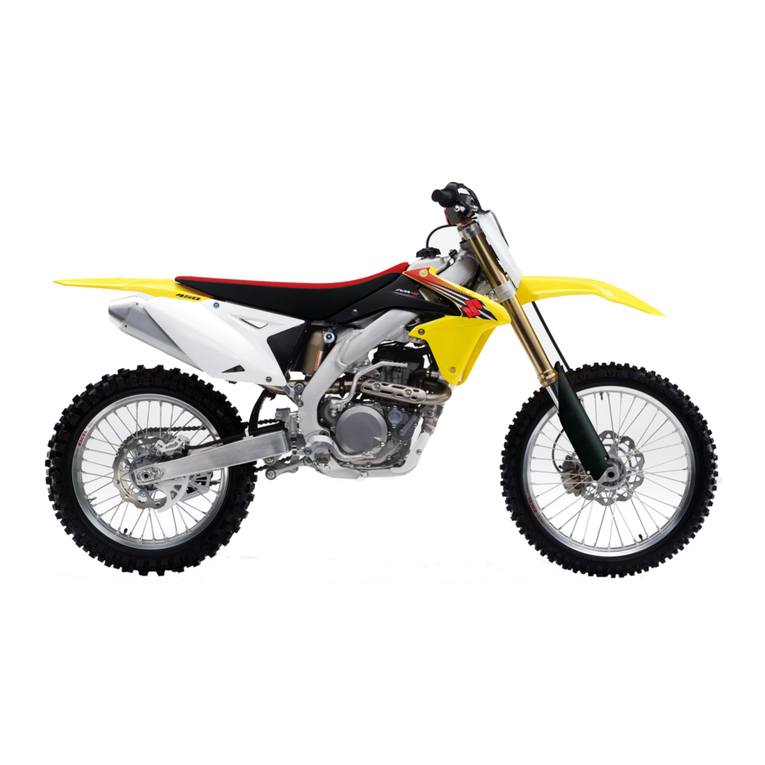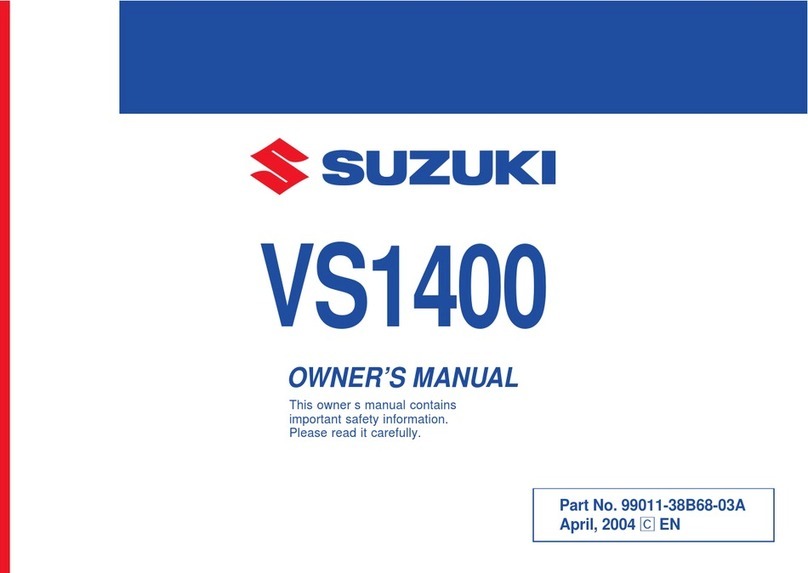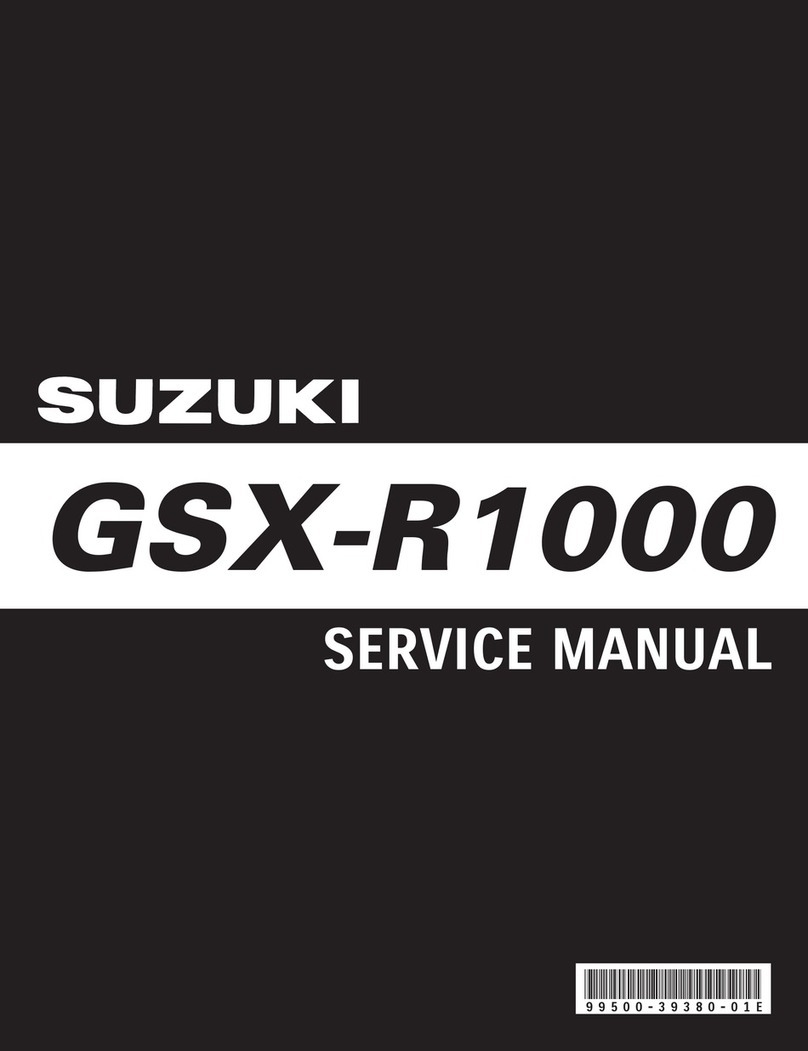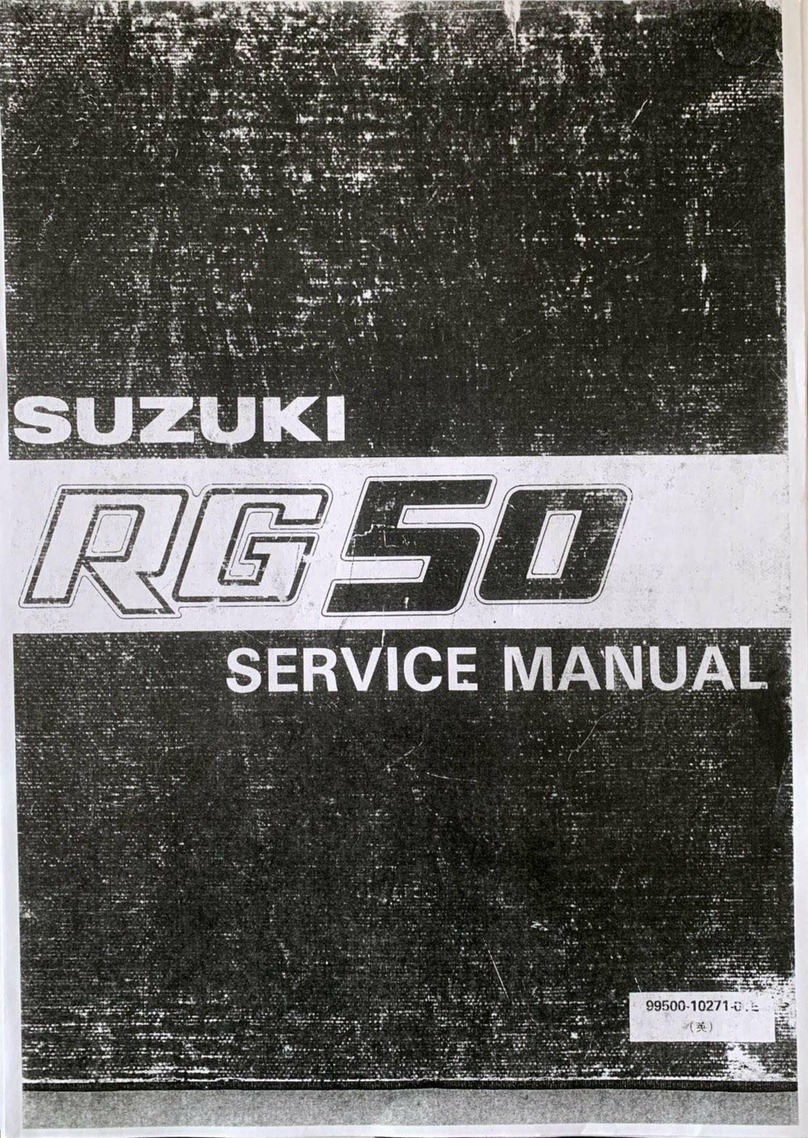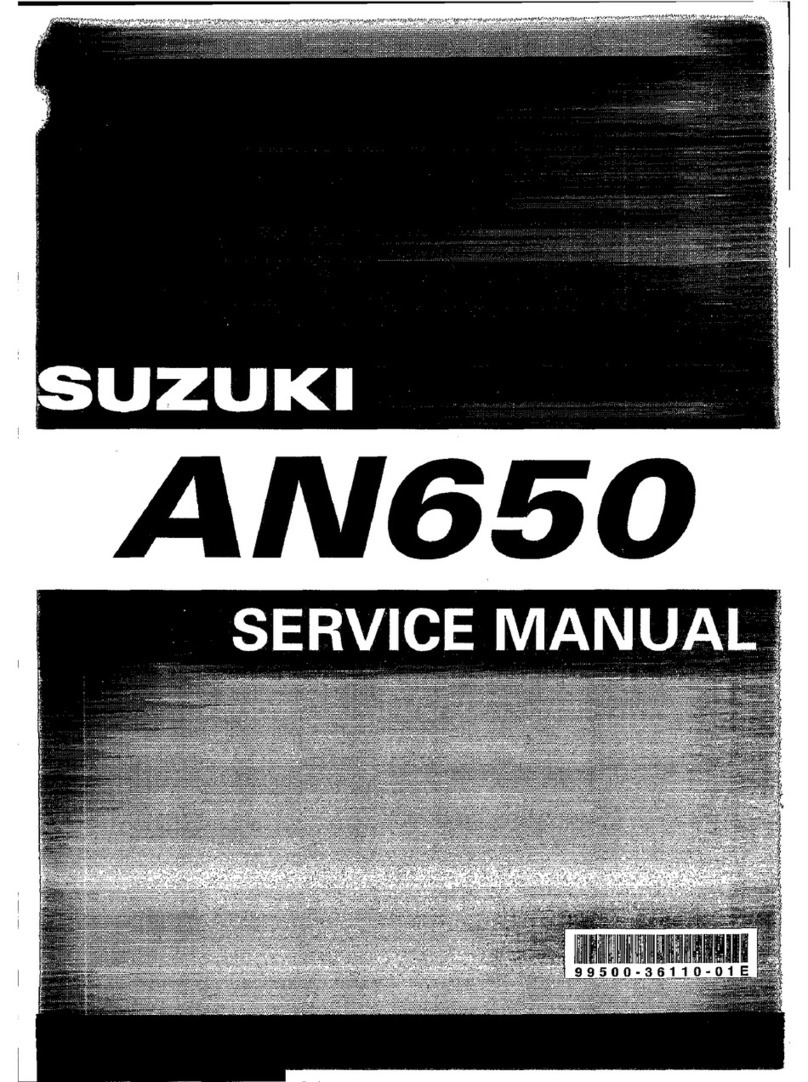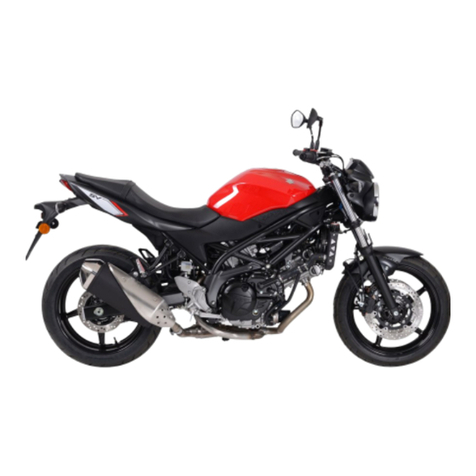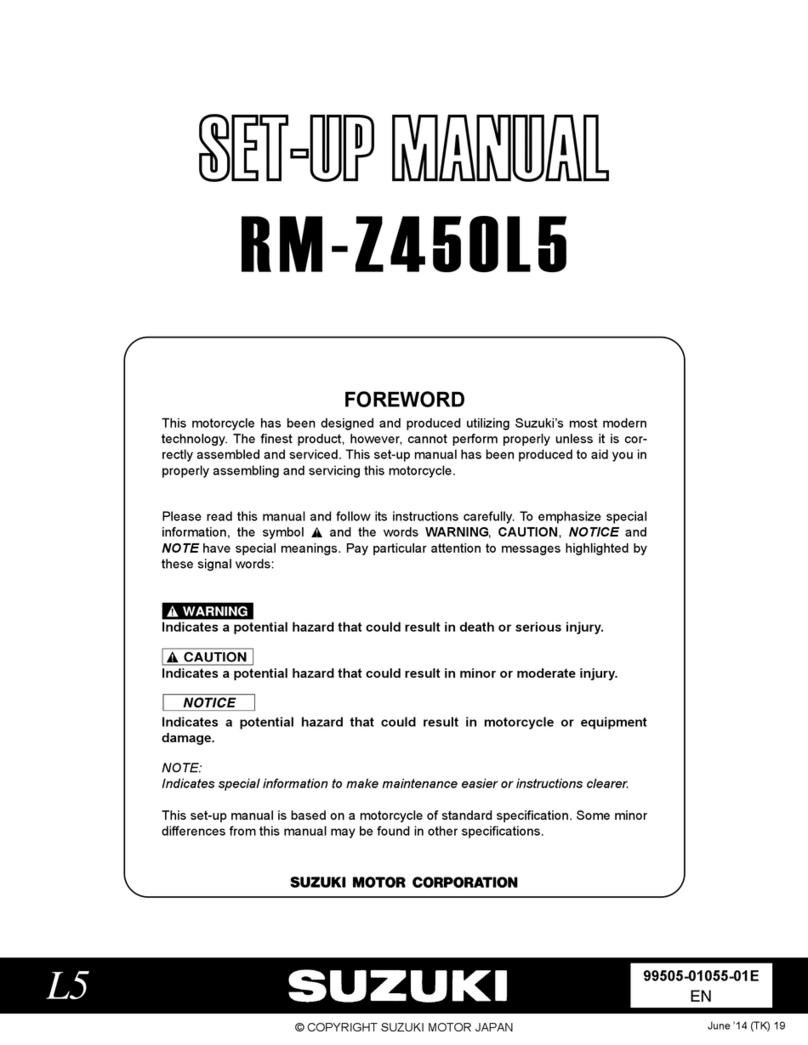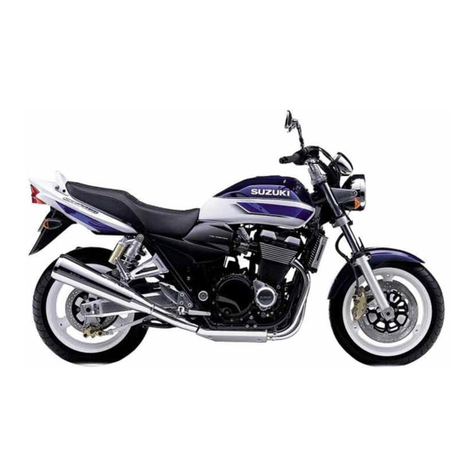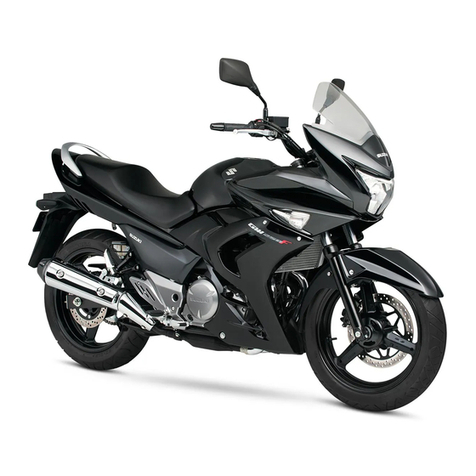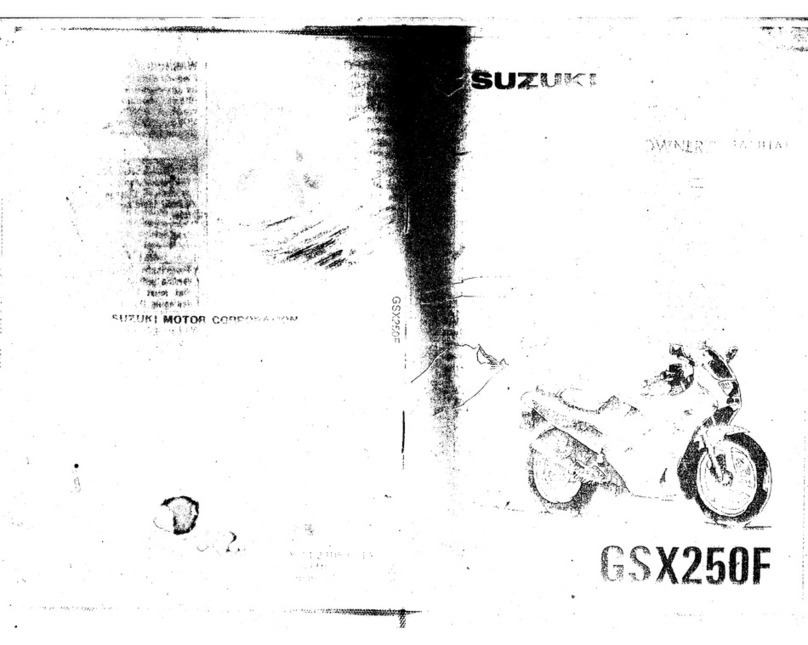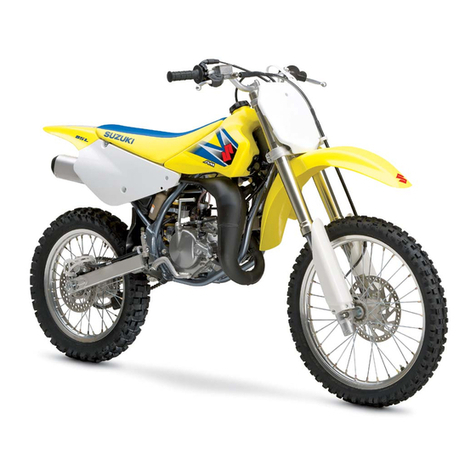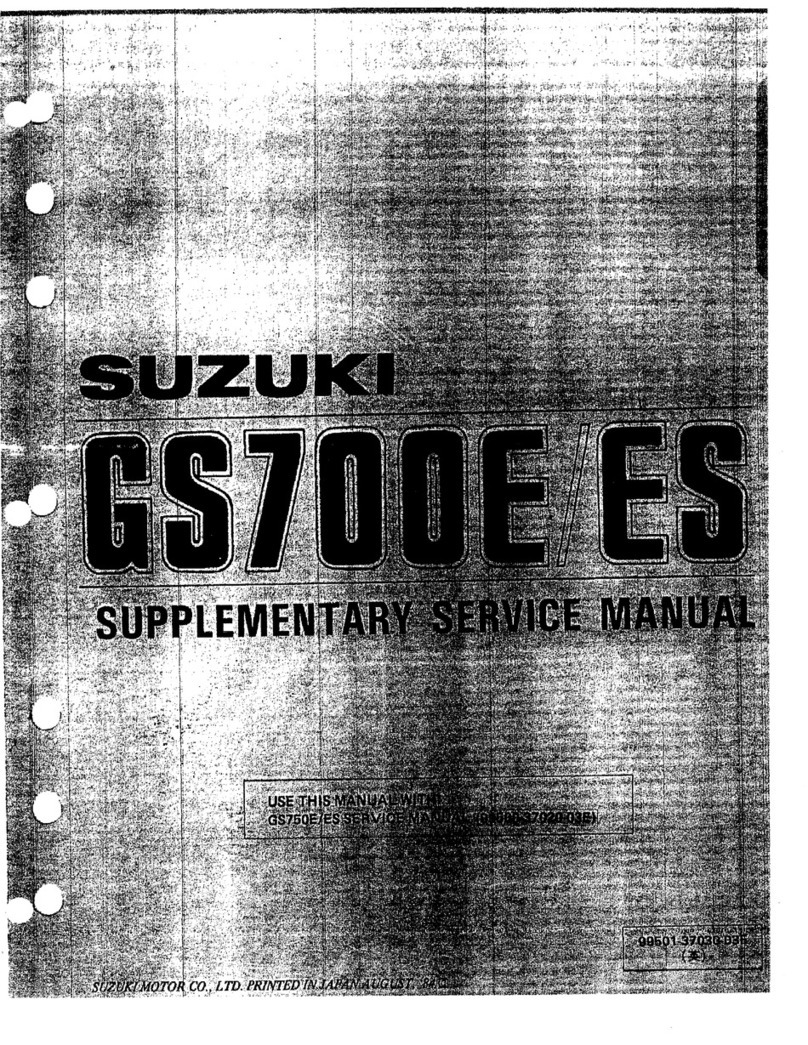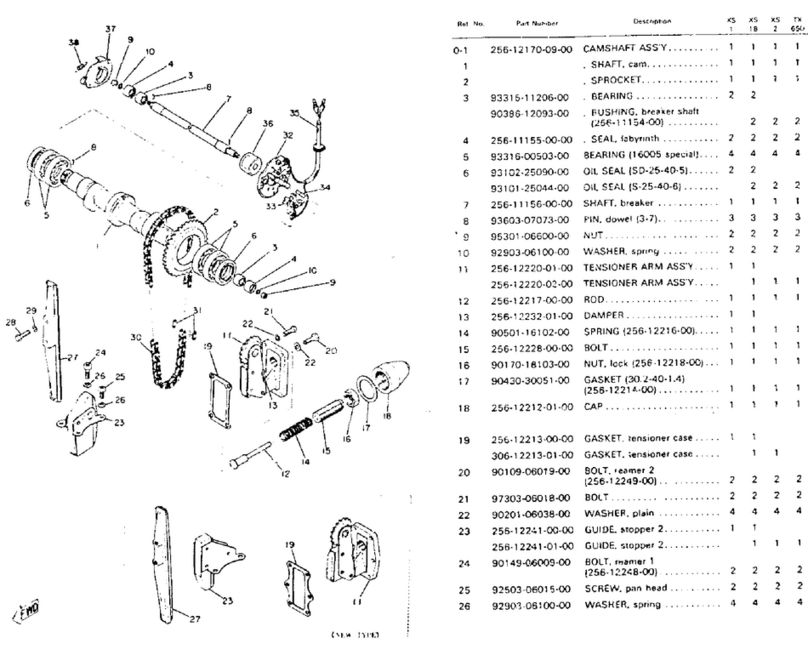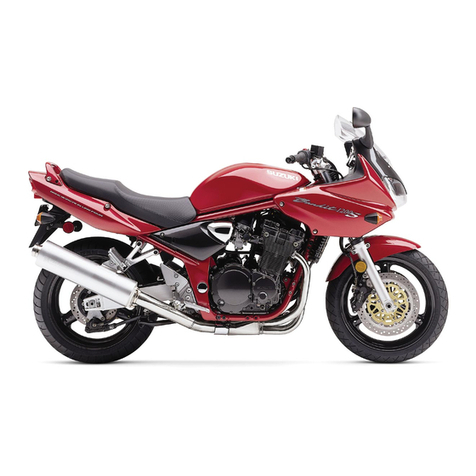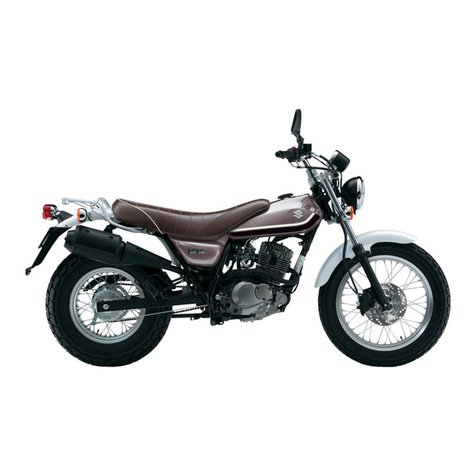
GENERAL INFORMATION 1-5
GENERAL CONSIDERATIONS
• Wear a helmet and goggles
A helmet is the most important piece of gear to
wear. Helmets do not reduce essential vision or
hearing. Generally, helmets do not cause or
intensify injury if you crash. Helmets simply help
your skull protect your intelligence, your memory,
your personality, and your life.
Your eyesight is equally valuable. Wearing suit-
able eye protection can help keep your vision
unblurred by the wind and help shield your eyes
from branches and airborne matter like bugs, dirt,
or pebbles kicked up by tires. Wear a helmet and
eye protection every time you ride.
• Wear protective gear
Wear proper clothing when you ride. Avoid loose
clothes or scarves, which could get caught in
moving parts. Abrasion injuries can be minimized
by wearing protective clothing including gloves,
strong boots that fit over the ankle, long pants,
and a long sleeve shirt or jackets. Experienced
riders often wear a kidney belt and chest or back
protector for additional comfort and protection.
• Inspect your machine before riding
Before each use, perform an inspection per
“PERIODIC MAINTENANCE” section starting on
page 2-2.
• No Passengers
Suzuki RMs are designed for the rider only.
• Practice on level ground
Before you begin riding, you should find a good
place to practice the skills you need to ride
safely. Find a flat, open area with enough space
to maneuver. Check with your Suzuki dealer or
call police department if you do not know where
you can ride.
Review the controls on your motorcycle before
riding.
• Know your limits
Always ride within the boundaries of your own
skills. Knowing these limits and staying within
them will help you avoid accidents. Ride only in
events appropriate for your experience.
Safely competing on a motorcycle requires that
your mental and physical skills are fully part of
the experience. You should not attempt to oper-
ate a motor vehicle, especially one with two
wheels, if you are tired or under the influence of
alcohol or other drugs. Alcohol, illegal drugs, and
even some prescription and over-the-counter
drugs and cause drowsiness, loss of coordina-
tion, loss of balance, and loss of good judge-
ment. If you are tired or under the influence of
alcohol or other drugs, PLEASE DO NOT RIDE
your motorcycle.
• Conclusion
The actions of other riders are unpredictable.
Your motorcycle’s condition can change. These
factors can best be dealt with by giving every ride
your full attention.
Circumstances beyond your control could lead to
an accident. You need to prepare for the unex-
pected by wearing a helmet and other protective
gear, and practicing safe riding techniques to
minimize the damage to you and your machine.
May all of your rides on your new Suzuki be winning
rides!
